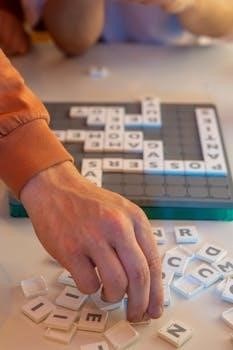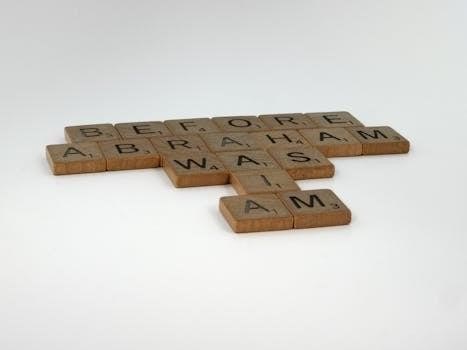manual reader crossword puzzle

manual reader crossword puzzle
Manual Reader Crossword Puzzle⁚ A Comprehensive Guide
Unlocking the cryptic world of crossword puzzles often involves deciphering nuanced clues. “Manual reader” is one such clue that frequently appears. This guide provides a comprehensive overview, exploring common solutions, helpful solving strategies, and where to find these perplexing clues.
The phrase “manual reader” as a crossword clue may seem straightforward, yet it often requires a specific understanding of how crossword setters craft their puzzles. It’s not simply about someone who reads manuals; it’s about finding the concise, often single-word answer that fits the puzzle’s grid. This clue typically plays on words, using a common term for someone who interacts with instructions or operates a device.
Understanding the context of the crossword is crucial. The publication, theme, and even the crossword setter’s style can influence the correct answer. For instance, a New York Times crossword might favor a different solution than a USA Today puzzle. The length of the answer is also vital; “manual reader” could translate to a four-letter, five-letter, or even longer word, depending on the grid.
This guide will dissect the various possibilities for “manual reader” in crosswords, explore common answer patterns, and provide tips to crack this particular clue. We’ll delve into potential solutions like “USER,” discuss other valid answers, and show you how to leverage crossword solver websites and databases to your advantage. Whether you’re a novice or a seasoned crossword enthusiast, this guide will equip you with the knowledge to confidently tackle “manual reader” and similar clues.
Common Clues and Definitions
When encountering “manual reader” in a crossword puzzle, it’s essential to understand the common ways this clue is presented. Crossword compilers often employ concise definitions, aiming for brevity and precision. The most frequent definition revolves around someone who uses or operates something, often implying the act of consulting a manual for guidance.
Another common angle plays on the idea of a person who takes drugs, subtly connecting “manual reader” to the term “user.” This type of clue relies on a double meaning, adding a layer of complexity to the puzzle. Be mindful of the overall theme or tone of the crossword, as this can provide hints about the intended definition.
Furthermore, clues might allude to specific types of manuals or devices; For instance, a clue could reference software manuals, hinting at a technology-related answer. Variations might also include “instruction manual reader,” further narrowing down the possibilities. Recognizing these recurring patterns and definitions is crucial for effectively solving “manual reader” clues. Consider alternative interpretations and be prepared to think outside the box to uncover the correct solution. Remember to analyze the surrounding clues and grid to confirm your answer aligns with the overall puzzle.
“User” as the Primary Answer
The most common and straightforward answer to the “manual reader” crossword clue is often “USER.” This four-letter word directly aligns with the definition of someone who consults a manual for instructions or guidance. It’s a concise and frequently employed solution, making it the first possibility to consider when tackling this clue.
The prevalence of “USER” as the answer stems from its direct association with the act of using a product or service, typically accompanied by a manual. Crossword constructors favor this answer due to its simplicity and unambiguous connection to the clue.
However, it’s crucial to verify that “USER” fits within the context of the surrounding clues and the grid pattern. Always double-check the intersecting letters to ensure compatibility. While “USER” is a highly probable solution, be prepared to explore alternative possibilities if it doesn’t align with the rest of the puzzle. Consider the length of the answer and any existing letters in the grid as valuable clues to confirm or reject “USER” as the correct solution. Don’t hesitate to explore other potential answers if necessary.
Other Potential Answers (4-Letter Solutions)
While “USER” reigns as the most frequent solution for a four-letter “manual reader” clue, it’s wise to consider alternatives, especially if existing letters in the grid present a conflict. Other possibilities, though less common, exist and might hinge on a slightly different interpretation of the clue.
One potential alternative is “EXEC,” short for “executive,” implying someone who refers to a manual for operational guidance. “OPER” for “operator” is also a possible solution, referring to someone who operates machinery or software using a manual;

Remember to analyze the puzzle’s overall theme and any adjacent clues for contextual hints. Crossword clues sometimes employ clever misdirection, so don’t immediately dismiss less obvious answers. If the puzzle leans towards technical jargon, “OPER” might be more appropriate. If it involves workplace scenarios, “EXEC” could be the better fit. Consider synonyms or related terms that fit the four-letter constraint. Always cross-reference with intersecting clues before committing to a solution. Flexibility and open-mindedness are key to conquering challenging crossword puzzles.

Solutions with 5-6 Letters
Expanding the letter count opens doors to a broader range of potential solutions for the “manual reader” clue. When a four-letter answer like “USER” doesn’t fit, exploring five- and six-letter possibilities becomes essential. Consider words that describe the role or action of someone consulting a manual.
A five-letter solution could be “PILOT,” referring to someone who uses a manual to operate an aircraft or other complex machinery. “READER” itself is a meta solution, directly referencing the clue’s wording.
Six-letter answers offer even more nuance. “TRAINEE” suggests someone learning from a manual, while “OPERAT” could refer to someone engaging in the action of operating. “BROWSE” implies carefully going through something. If the manual is software related, “CLIENT” could be correct, as the client browses a software manual. Analyze the surrounding clues for context. Is the puzzle focused on aviation, technology, or general usage? This thematic context will guide you towards the most fitting answer within the five- or six-letter constraint.
Where to Find “Manual Reader” Clues
The “manual reader” clue, while not exceedingly rare, appears with regularity in a variety of crossword puzzle venues. Seasoned solvers encounter it in prominent publications like The Wall Street Journal, known for its challenging and sophisticated puzzles. The New York Times crossword, a staple for many, also features this clue periodically.
Beyond these national newspapers, “manual reader” pops up in syndicated puzzles such as those distributed by King Features Syndicate and Universal. Local newspapers that carry syndicated crosswords are therefore another potential source. Furthermore, keep an eye on specialized crossword puzzle books and websites dedicated to the pastime. Many online crossword platforms archive past puzzles, allowing you to search for specific clues and track their frequency.
Remember that the difficulty level of the puzzle often correlates with the obscurity of the answer. A Monday NYT puzzle will likely have “USER” as the solution, whereas a Saturday puzzle might require a more creative interpretation and longer word. Cultivating a habit of regularly tackling diverse crossword sources will increase your familiarity with common clues and ultimately improve your solving prowess.
Crossword Solver Websites and Databases
In the digital age, a wealth of resources is available to assist crossword enthusiasts, particularly when stumped by clues like “manual reader.” Numerous crossword solver websites and databases function as invaluable tools, offering potential answers based on clue keywords, letter patterns, and puzzle context. These platforms aggregate vast collections of crossword puzzles and solutions, providing a comprehensive repository for solvers of all skill levels.

Popular options include Crossword Solver, Crossword Nexus, and Dan Word, each boasting extensive databases and user-friendly search interfaces. Many of these sites allow you to input known letters, significantly narrowing down the possibilities. Some even offer advanced features, such as filtering results by puzzle source or difficulty level. Furthermore, dedicated crossword forums and online communities provide spaces for solvers to collaborate, share insights, and discuss challenging clues.
However, exercise caution when relying on these tools. While they can be incredibly helpful for overcoming roadblocks, overuse can detract from the intellectual stimulation and satisfaction derived from solving puzzles independently. Employ these resources strategically, focusing on learning new vocabulary and solving techniques rather than simply seeking immediate answers. Remember, the true reward lies in the process of deduction and discovery.
The Frequency of the Clue
The clue “manual reader” appears with moderate frequency across various crossword publications, suggesting it’s a staple in the crossword creator’s arsenal, but not excessively common. While not an everyday occurrence, seasoned solvers should familiarize themselves with its potential answers. Its occurrence varies depending on the puzzle’s difficulty and the publication’s target audience. For instance, it might appear more frequently in weekday puzzles in newspapers like the Wall Street Journal or Newsday compared to the notoriously challenging New York Times Sunday crossword.
Databases tracking crossword clues reveal its sporadic yet consistent presence. Its reliance on common words with multiple meanings contributes to its appeal. The relatively short length of typical solutions, such as “USER,” also makes it a convenient fit for many grid layouts.
Therefore, recognizing “manual reader” as a potential clue and remembering its primary answers is a worthwhile strategy for any crossword enthusiast. While not guaranteed to appear in every puzzle, its recurrence rate suggests that encountering it is only a matter of time. By being prepared with potential solutions, solvers can confidently tackle this clue when it inevitably surfaces. Remember that crossword solving requires a combination of knowledge, logic, and a bit of luck!
Variations⁚ “Manual Readers” (Plural)
The plural form, “manual readers,” introduces a slight twist to the crossword clue. While the singular form often points to “USER,” the plural necessitates a different approach. The most common solution remains closely related, typically referring to the plural of “USER,” which would be “USERS”. The added “S” significantly impacts the possible letter combinations and grid placement.
However, solvers should also consider less direct interpretations. “Manual readers” could potentially refer to a group of individuals associated with manuals. Context within the crossword is crucial. Are there other clues related to technology, instruction, or documentation? These thematic connections can point toward more nuanced answers.
It’s also important to note that the plural form might open the door to slightly longer solutions, potentially extending to five or six letters. Words like “STAFF” or “TRAINEES” could become viable options if the surrounding letters align. Therefore, when encountering “manual readers,” consider the primary solution, but remain flexible and explore alternative interpretations based on the puzzle’s overall theme and the intersecting letters. Careful analysis and deductive reasoning are vital to cracking this variation of the clue.
The Importance of Letter Count
In the realm of crossword puzzles, the letter count associated with a clue is paramount. It serves as a primary constraint, immediately narrowing down the vast possibilities of potential answers. When confronted with the clue “manual reader,” the first step is to ascertain the number of letters required. This single piece of information can drastically simplify the search.
For instance, if the puzzle indicates a four-letter solution, “USER” becomes a highly probable answer. Conversely, if a five- or six-letter word is needed, alternative solutions must be explored. The letter count also influences the solver’s strategy. Knowing the length of the word allows for a more targeted search in crossword databases and solver websites.
Furthermore, the letter count interacts with intersecting words. Existing letters from solved clues provide valuable anchors, further restricting the options and guiding the solver toward the correct answer. Without considering the letter count, one might waste time considering solutions that are simply incompatible with the puzzle’s grid. Therefore, paying close attention to the letter count is an indispensable element in effectively solving “manual reader” and other crossword clues. It provides a crucial framework for the entire solving process.

Using Existing Letters to Solve
Leveraging existing letters within a crossword grid is a powerful technique for cracking challenging clues like “manual reader.” Solved words intersecting with the unknown answer provide fixed letters, dramatically reducing the number of possibilities. These letters act as anchors, guiding your search and eliminating incorrect solutions.
Imagine, for example, that the clue “manual reader” has four letters, and an intersecting word provides the second letter “S.” This immediately suggests “USER” as a strong contender. Similarly, if the third letter is “E,” you might consider words like “TUSER” (though less common, it’s a possibility to investigate).
Crossword solver websites often allow you to input known letters, further refining the search. These tools sift through vast databases, presenting only words that match the specified pattern. Always prioritize analyzing the intersecting letters before resorting to brute-force guessing. This strategic approach significantly increases your chances of success. Furthermore, pay attention to the frequency of certain letters in the English language, which can offer additional clues. The intelligent use of existing letters transforms a daunting puzzle into a manageable challenge, leading you closer to the satisfying “aha!” moment of solving “manual reader;”
Tips for Solving “Manual Reader” Clues
Tackling “manual reader” clues requires a blend of vocabulary, logic, and strategic thinking. Begin by considering the most common and direct interpretation⁚ a “user” of a manual. However, be prepared for more creative or indirect definitions. Look for contextual clues within the puzzle itself. The theme of the crossword, the difficulty level, and the style of the clues can all offer valuable hints.
Pay close attention to the letter count. This is a crucial piece of information that narrows down the possibilities significantly. If you have intersecting letters, use them to your advantage. Input these known letters into a crossword solver website to generate potential answers;
Consider alternative meanings of “manual” and “reader.” Could “manual” refer to something physical or hands-on? Could “reader” imply someone who interprets or deciphers? Think outside the box and explore different angles. Also, remember to check for common crossword abbreviations and synonyms. “User,” “Tutor” or “Guide” might be viable solutions, depending on the specific puzzle. Don’t be afraid to experiment and try different options until you find the one that fits both the clue and the surrounding grid. Persistence and a flexible mindset are key to conquering these puzzles.
Related Crossword Puzzle Themes
Crossword puzzles often revolve around specific themes, and clues like “manual reader” can be connected to broader categories. One common theme is technology, where “manual reader” might relate to software users, device operators, or even technical support roles. Another frequent theme is language and literature, in which case “manual reader” could point to someone studying instructional texts or guides.
Occupations are another rich source of crossword themes. Here, “manual reader” might describe a technician, mechanic, or repair person who relies on manuals for their work. Skill-based themes can also be relevant. For example, if the puzzle features clues about crafts or hobbies, “manual reader” could refer to someone learning a new skill from a handbook.
Consider puzzles with themes centered on instructions, directions, or how-to guides. These puzzles are likely to include “manual reader” as a prominent clue. Furthermore, pay attention to puzzles with a focus on education, learning, or self-improvement, where the act of consulting a manual is a central concept. Being aware of these thematic connections can significantly aid in solving “manual reader” and other related clues within the puzzle.